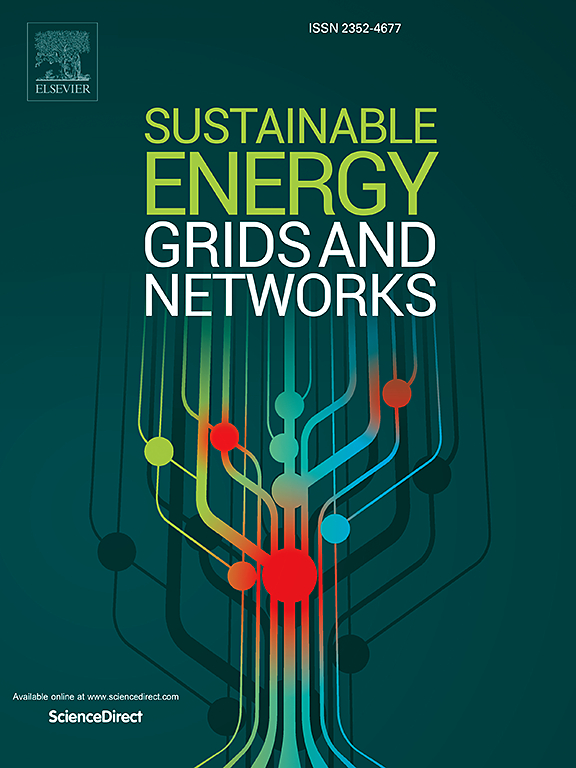基于同步 PMU 测量的在线电压稳定性指数比较分析
IF 4.8
2区 工程技术
Q2 ENERGY & FUELS
引用次数: 0
摘要
在当前电气化和部署基于电力电子设备的趋势下,对电力系统电压稳定裕度可靠实时信息的需求日益增长。本文评估和比较了针对这一应用提出的四种电压稳定指数(VSI),它们完全基于同步相量测量。在评估每种方法在确定最大功率传输点时的稳健性和准确性的同时,还探讨了负荷特性与电压稳定裕度的一致估计之间的相关性。此外,还详细讨论了每种 VSI 方案在特定系统动态下触发误报的可能性。比较分析来自 3 总线测试系统、IEEE 9 总线网络和 IEEE 39 总线网络的动态模拟数据,所有数据均在基于 Python 的开源电力系统模拟器 DynPSSimPy 中建模。案例研究包括监控设备的放置、不同的负载类型、线路断开事件和测量噪声的存在。所提供的结果可作为开发和/或增强适合实时应用的 VSI 的参考点,突出了其最显著的优点和缺点,并为在控制中心环境中采用此类方法时需要考虑的潜在权衡问题提供了见解。本文章由计算机程序翻译,如有差异,请以英文原文为准。
Comparative analysis of online voltage stability indices based on synchronized PMU measurements
The need for reliable real-time information on voltage stability margins of electrical power systems is an increasingly relevant concern within the current trend of electrification and deployment of power electronics-based devices. This paper conducts the assessment and comparison of four Voltage Stability Indices (VSIs) proposed for this application and based exclusively on synchronized phasor measurements. The robustness and accuracy of each method in identifying the point of maximum power transfer are evaluated as the correlation between load characteristics and consistent estimation of voltage stability margins is explored. In addition, the likelihood inherent to each VSI formulation of triggering false alarms under certain system dynamics is addressed in detail. The comparative analyses are derived from dynamic simulation data of a 3-bus test system, the IEEE 9-bus network and the IEEE 39-bus network, all modelled in the open-source Python-based power system simulator DynPSSimPy. Case studies cover placement of monitoring device, different load types, line disconnection events and presence of measurement noise. The results presented serve as a reference point for the development and/or enhancement of VSIs suitable for real-time applications, highlighting their most significant advantages and drawbacks and providing insights on potential trade-offs that need to be considered when employing such approaches within control centre settings.
求助全文
通过发布文献求助,成功后即可免费获取论文全文。
去求助
来源期刊

Sustainable Energy Grids & Networks
Energy-Energy Engineering and Power Technology
CiteScore
7.90
自引率
13.00%
发文量
206
审稿时长
49 days
期刊介绍:
Sustainable Energy, Grids and Networks (SEGAN)is an international peer-reviewed publication for theoretical and applied research dealing with energy, information grids and power networks, including smart grids from super to micro grid scales. SEGAN welcomes papers describing fundamental advances in mathematical, statistical or computational methods with application to power and energy systems, as well as papers on applications, computation and modeling in the areas of electrical and energy systems with coupled information and communication technologies.
 求助内容:
求助内容: 应助结果提醒方式:
应助结果提醒方式:


